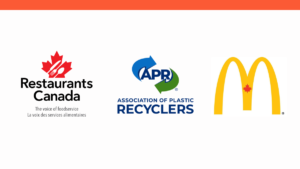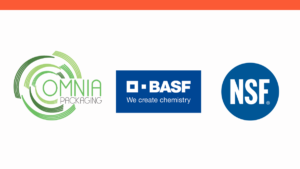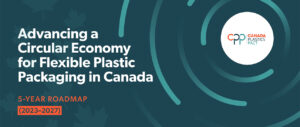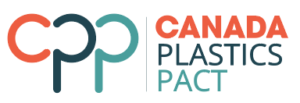
Canada Plastics Pact releases 2022 Annual Report showcasing industry momentum towards a circular plastics economy
OTTAWA, January 9, 2024 (GlobeNewswire) — In Canada, momentum is building to advance a circular economy for plastics. The Canada Plastics Pact (CPP) is leading a concerted effort of businesses and organizations to scale innovative solutions that will keep plastics in the economy and out of people, animals, and the environment.
The CPP today published its 2022 Annual Report, presenting an aggregated overview of the reporting data from 90 CPP Partners during its second year.
This report has highlighted some of the challenges in achieving CPP targets, while also showcasing areas of strength and opportunities for CPP Partners to work collectively and boldly to address plastic waste and pollution.
Based on the most current and reliable data available, in 2022 it is estimated that Canada generated 978,743 tonnes of plastic packaging. Of this amount, 20% of plastic packaging was recycled, up from 12% in 2019. Flexible packaging saw its recycling rate increase from 1% in 2019 to 4% in 2022. Moreover, there has been a surge in PCR use among CPP Signatories, marking a 32% increase in PCR compared to 2020.
As part of CPP’s commitment to transparency, Partners that join the Pact have agreed to share annual data to measure progress toward the four targets outlined in the CPP’s Roadmap to 2025. Key metrics reported in the 2022 Annual Report include:
- Target 1: Define a list of plastic packaging that is to be designated as unnecessary or problematic and take measures to eliminate them by 2025.
- Progress: Unnecessary and problematic guidance document set for public release in January 2024.
- Progress: 100% of CPP Signatories have plans to reduce or eliminate eight problematic items.
- Target 2: Support efforts towards 100% of plastic packaging being designed to be reusable, recyclable or compostable by 2025.
- Progress: 43% of plastic packaging placed on the market by CPP Partners is designated as reusable, recyclable, or compostable.
- Target 3: Undertake ambitious actions to ensure that at least 50% of plastic packaging is effectively recycled or composted by 2025.
- Progress: Based on the most current and reliable data available, it is estimated that 20% of plastic packaging was recycled in Canada in 2022, with flexible packaging having a recycling rate as low as 4%.
- Target 4: Ensure an average of at least 30% recycled content across all plastic packaging (by weight) by 2025.
- Progress: 12% was the average amount of post-consumer recycled (PCR) content (by weight) across plastic packaging used by CPP Partners.
“Despite what may seem like slow progress, each small victory highlighted in the 2022 Annual Report is a stepping stone, building upon our foundational groundwork. The reality is that the plastic waste crisis isn’t a challenge the industry can solve within a few years – but the compound effect of our efforts suggests we are gaining momentum. Key stakeholders within the plastics value chain are actively engaged and working towards viable solutions,” says Cher Mereweather, Managing Director at the Canada Plastics Pact. “In the years ahead, the CPP will double down on source reduction, design for recyclability, infrastructure investment, and the alignment of good policy with the data to validate progress and impact.”
Notably, in 2022, a significant milestone was reached with the launch of the Canadianized Golden Design Rules for Plastics Packaging, which aims to to drive innovation and scalable actions that will result in less plastics packaging overall and easier to recycle plastics packaging. More than half of CPP Signatories adopted the GDRs with plans to ensure all their packaging are designed for sustainability.
“We’ve learned a lot these past few years at the CPP and now we’re working to translate those learnings into actionable initiatives,” says Catherine O’Brien, Chair and President at the Canada Plastics Pact and Senior Vice President of Corporate Affairs at Nestlé Canada. “The data, coupled with our concerted efforts across our working groups to advance the priorities within our roadmap shows that the future of plastics is circular and industry is moving in that direction.”
While it’s clear that there’s a long road ahead towards achieving full plastics circularity, since the CPP’s launch, more than 98 CPP Partners are now taking meaningful steps to advance its roadmap targets.
Resources:
- Read the 2022 Annual Report.
- Read the Canada Plastics Pact Roadmap to 2025.
- Read quotes from Canada Plastics Pact Partners.
- Learn more about our story.
Media inquiries:
To arrange an interview, please contact:
Moojan Haidari, Communications Manager, Canada Plastics Pact
About the Canada Plastics Pact
The Canada Plastics Pact is leading Canada’s response to the escalating plastic crisis.
We exist to eliminate plastic waste by accelerating and scaling the solutions that will keep plastics in the economy and out of people, animals, and nature.
Through fostering innovation and collaboration, more than 98 Partners from across the plastics value chain are taking meaningful steps to eliminate unnecessary and problematic plastics, redesign packaging and bolster their usage of recycled plastic.
CPP is a member of the Ellen MacArthur Foundation’s Global Plastics Pact network and is a solution space of The Natural Step Canada in partnership with the Smart Prosperity Institute, whose shared vision is a strong and inclusive economy that thrives within nature’s limits.





